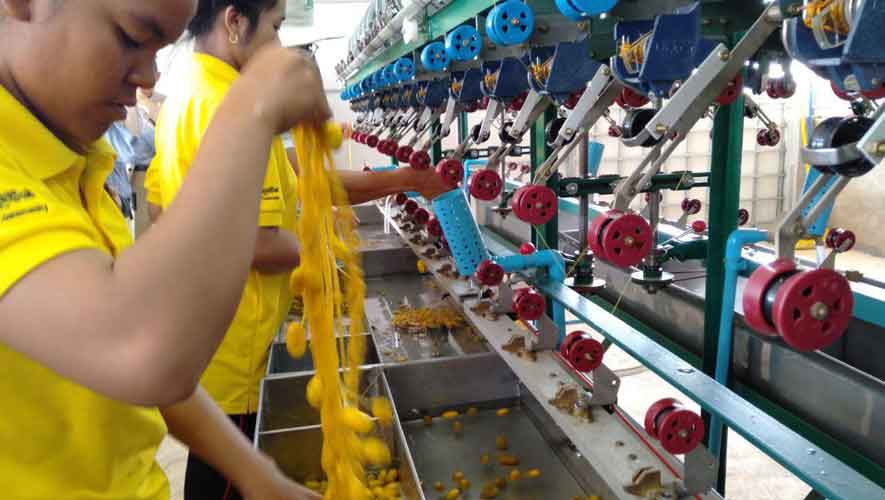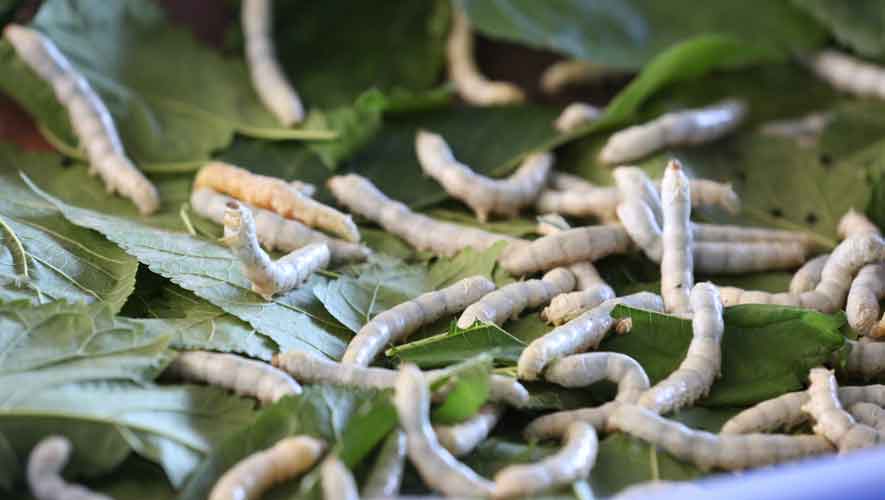Sericulture or the production of silk and silkworm rearing is an ancient industry in Cambodia, a pride of the nation. It nearly collapsed in the Khmer Rouge era.
For the latest Cambodian Business news, visit Khmer Times Business
The industry dates back to the 13th century when Chinese diplomats visited with silk worms and taught the locals how to raise them, and harvest the silk to be turned into cloth material. In the 1800s, Cambodia’s design gained “universal recognition” but more than a century later, silk production faltered, contributing less than one percent or four tonnes to the domestic demand of 400 tonnes per annum with a total value of $30 million. This has resulted to increased import of the raw material.
To overcome the problem, Royal University of Phnom Penh (RUPP) trustee board chairman Mey Kalyan tells Capital Cambodia that the university has invented a model of intervention, a new inclusive silk development model, to reduce the import of raw silk yarn.
The model links up academicians, the private sector, farm communities, and buyers to create a viable ecosystem for the sericulture sector.
“The model would boost local silk production, benefit the country’s economy and improve the lives and livelihoods of farmers,” he adds.
In order to replace the import of 400 tonnes of silk yarn per year, Cambodia needs to have 20,000 hectares (ha) of land planted with mulberry trees that serve as food for the worms.
The university is working with three silk community leaders in Kampong Speu, Kampong Chhnang, and Mondulkiri whose total production area amounts to 21ha. It aims to raise the production area to 200ha by the end of 2019 as more farmers are encouraged to participate in the industry.
Kalyan says farmers can grow 7,000 mulberry trees on one hectare of land. The plant matures in six months and it can feed the worms for at least 20 years.
“The business enables farmers to generate a sustainable income over the years where they can either sell mulberry leaves or cocoons to the factory in Kampong Speu, and earn about 500 riel per kilogram of mulberry leaves and up to $5 per kilogram of cocoons. In a day, farmers can earn $25 per hectare of mulberry leaves,” he adds.
“Our long-term goal is to one day be able to export our products. We have the land. We have the labour. All we need is to empower silk producers with the right knowledge and technology,” he says.
In Kampong Speu, Aoral Silk Community leader Ea Hoknym seeks communities and farmers in Takeo, Kampong Thom, Kampong Cham, and Mondulkiri to conduct contract farming to expand mulberry plantations and raise the silkworm to supply the factory.

Farmers can earn between $500 and $600 per harvest cycle per hectare of mulberry land and if they do six cycles per year, they would earn $4,500 per year compared to only $700 per hectare of paddy rice in one season.
“That is why we are calling for farmers to join us to expand the plantations while diversifying its products. We have to expand before the rainy season in May,” Hoknym says.
Currently, its semi-automated reeling machine is able to produce 20 kilograms of silk yarn but to operate the machine at full capacity it needs at least 200ha of mulberry land.
The demand for raw material silk yarn is high in Cambodia, opines Artisans Association of Cambodia executive director Men Sinoeun, adding that he would support the local growth if the industry is able to supply the raw material to produce high-end products.
The domestic market absorbs only 30 percent of the finished silk products while the rest is exported but the association is keen to collect all the yarns made locally.
According to United Nations Development Programme, implementation of technology-based solutions would lead to an increase in quality and silk production efficiency.
“The promotion of the Cambodian silk industry recaptures one part of its rich silk history. It will benefit the country’s economy and improve the lives and livelihoods of farmers,” it adds.
Kalyan believes that the university’s model would help preserve an almost demolished artistic culture while diversifying rural economy, reduce migrant labour, and provide work to women.
“Sustainable development must be powered from within. If the sericulture industry is successful, it can contribute significantly to the development of the nation,” he adds.
Sok Chan
Business Writer, Capital Cambodia




